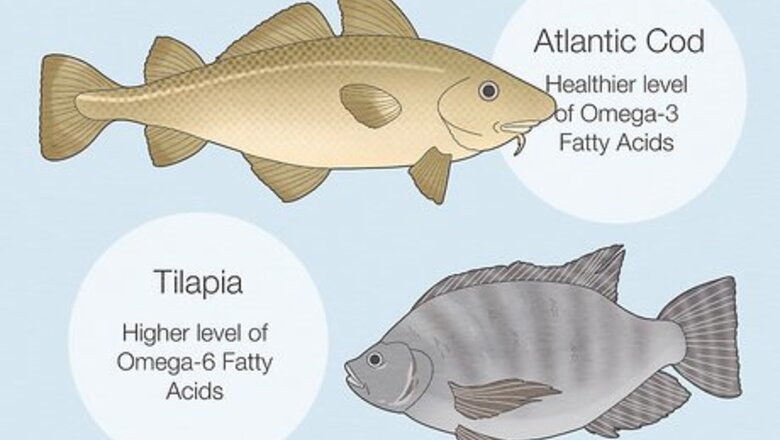
views
- Cod is considered healthier than tilapia because it’s leaner, contains more Omega-3 fatty acids, and has lots of other nutrients like niacin, B vitamins, and choline.
- Tilapia and cod have a similar taste and texture. Tilapia is slightly sweeter and firmer and can be substituted for cod in a variety of dishes like fish and chips or fish tacos.
- Tilapia is more sustainably sourced than cod since it’s a freshwater fish that can be farmed in a variety of habitats and feeds on plant-based food.
Nutrition
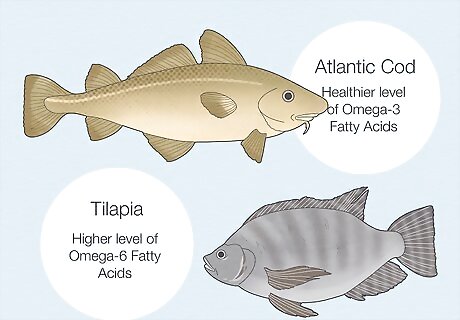
Cod is leaner and contains healthier fats than tilapia. Although both fish are nutritious, low-calorie options with similar protein content, cod contains higher levels of heart-healthy Omega-3 fatty acids and less fat overall than tilapia. Tilapia, on the other hand, has higher levels of Omega-6 fatty acids, which can promote inflammation, blood clotting, or constricted blood vessels when consumed in excess. Per 3 oz (85 g) serving: Atlantic cod contains: 70 calories 0.6 g fat (0.1 g saturated fat) 125 mg sodium 0 g carbs, 0 g fiber, 0 g sugar 15.1 g protein 156 mg Omega-3s 70 parts per billion of Mercury Tilapia contains: 81 calories 1.4 g fat (0.5 g saturated fat) 44 mg sodium 0 g carbs, 0 g fiber, 0 g sugar 17 g protein 77 mg Omega-3s 19 parts per billion of Mercury
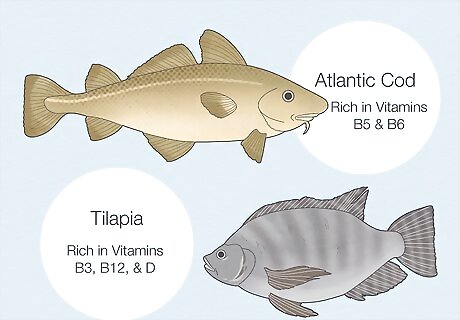
Cod is rich in Vitamins B5 & B6, but tilapia has Vitamins B3, B12, & D. Even though cod is considered the healthier option overall, tilapia is no slouch when it comes to packing a nutritious punch full of vitamins and minerals. In addition to B and D vitamins, it contains more selenium, copper, and folates than cod, all of which assist with cell division and energy production. Other valuable vitamins and nutrients that are more abundant in cod include niacin, choline, Vitamins E, A, and C, phosphorus, and potassium.
Flavor & Texture
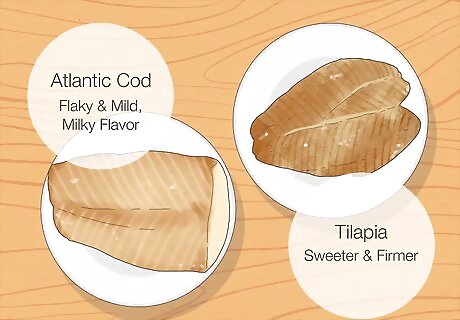
Cod and tilapia taste similar, but tilapia is slightly sweeter and firmer. Cod is a white fish with flaky meat and a mild, slightly milky flavor. Its texture is very tender, and its meat falls apart into bigger chunks than tilapia’s. The taste of cod isn’t very strong, but Atlantic cod tends to have a sweeter, more recognizable flavor. Tilapia is very mild (some call it flavorless) and has a sweetness similar to a red snapper or striped bass. It tastes less “fishy” than cod and other fish. Tilapia is firmer than cod when cooked, and its meat falls apart into smaller flakes. High-quality farmed tilapia generally taste better than wild tilapia that feed on algae and lake plants.
Substitution
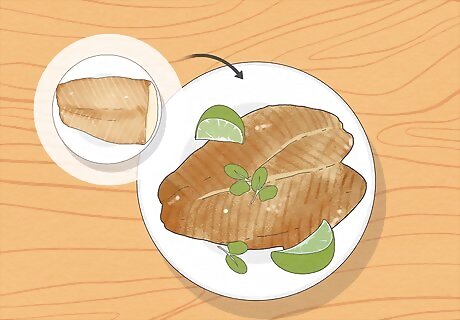
Swap tilapia for cod since it has a similar taste and texture. Because tilapia is so mild, it pairs well with just about any sauce, herb, or spice. This makes it a great fill-in for other white fish like haddock and cod in dishes such as fish and chips, fish tacos, or fish sandwiches. Equal amounts of cod and tilapia will cook in about the same time, meaning you don’t have to adjust recipes for one or the other when you’re substituting. Tilapia is as easy to cook as cod and you can prepare them in the same ways—bake them, fry them, steam them, grill them, and more!
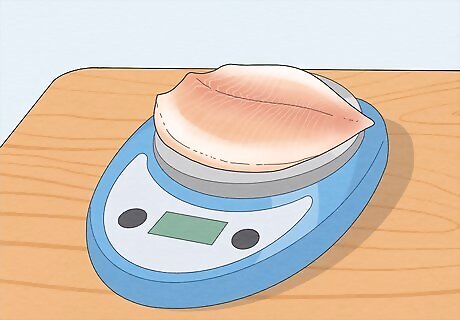
Choose filets of the same size, weight, and cut if you’re substituting. When you’re shopping for fresh fish, look for cuts of either fish that match what the recipe calls for, such as a 1 in (2.5 cm) thick filet or a 3 oz (85 g) filet. This way, you’ll avoid over or undercooking fish (you may still notice the slight difference in taste, though). Tilapia is usually sold as a flat, whole filet since it’s a smaller fish while cod typically comes in a thicker cross-section of a larger filet. Buy filets with the skin on if that’s what the recipe calls for, regardless of which fish you pick. If the filets are sold with skin on, assume the skin is edible.
Cost
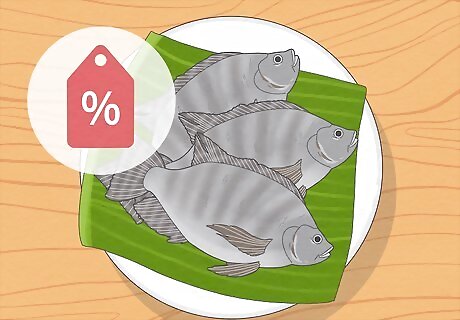
Tilapia is generally a few dollars cheaper per pound than cod. In fact, tilapia is usually the cheapest fish you can find at a grocery store or seafood market. Tilapia filets can cost around $4.99 per pound ($11 per kilogram), while cod filets are closer to $9.75 per pound ($21.49 per kilogram). Frozen fish is typically cheaper than fresh fish. Whole fish are cheaper per pound than pre-cut filets, but they contain parts you may not need or want (like bones, skin, or organs).
Sustainability
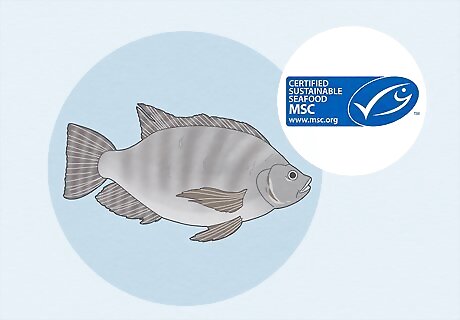
Tilapia is more sustainably farmed and fished than cod. Cod, especially in the Atlantic, was vastly overfished in the 20th century. A near-total collapse of the Canadian wild cod stock in 1992 marked a turning point in cod preservation, and even though populations are slowly recovering, stocks remain low in the US and around the world. Unlike cod, tilapia is largely farm-raised. It adapts easily to varying environments and can be cheaply fed plant-based food. Tilapia is raised in freshwater farms all over the world, especially in China, Egypt, the Philippines, Indonesia, Thailand, Mexico and Brazil. Look for labels from organizations like the Marine Stewardship Council on your fish packaging to see if it was sustainably fished or farmed.
Natural Habitat & Appearance
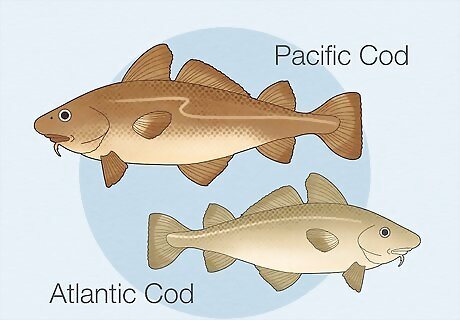
Atlantic cod is found in the cold saltwater of the North Atlantic ocean. Cod generally stays near the seafloor on either side of the Atlantic and feeds on other, smaller fish and various invertebrates. It can vary in color from greenish-grayish to brown, blackish, or dull red, and has 3 dorsal fins, 2 anal fins, and a chin barbel. Most caught cod weigh about 25 lb (11 kg), but the largest varieties can weigh up to 201 lb (91 kg) and measure 6 ft (1.8 m) long. Pacific cod look similar to Atlantic cod but are generally smaller (usually up to about 30 in (76 cm) long).
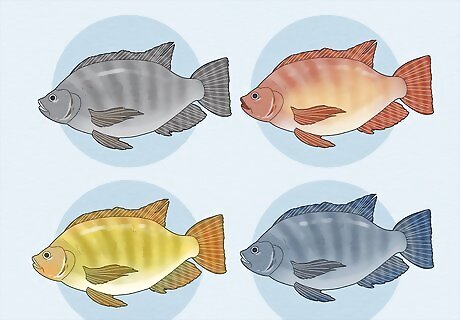
Tilapia originated in freshwater, coastal rivers and lakes in Africa. Today, they can be found in freshwater lakes and farms all over the world. They eat a largely vegetarian diet or algae and other freshwater plants, but will eat insects or worms on occasion. Tilapia have a long, unbroken dorsal fine and an anal fin with pointed ends and can be a variety of colors including black, red, gold, or blue. Tilapia are smaller than cod and usually measure up to 18 in (46 cm) long and weight around 5 lb (2.3 kg).



















Comments
0 comment